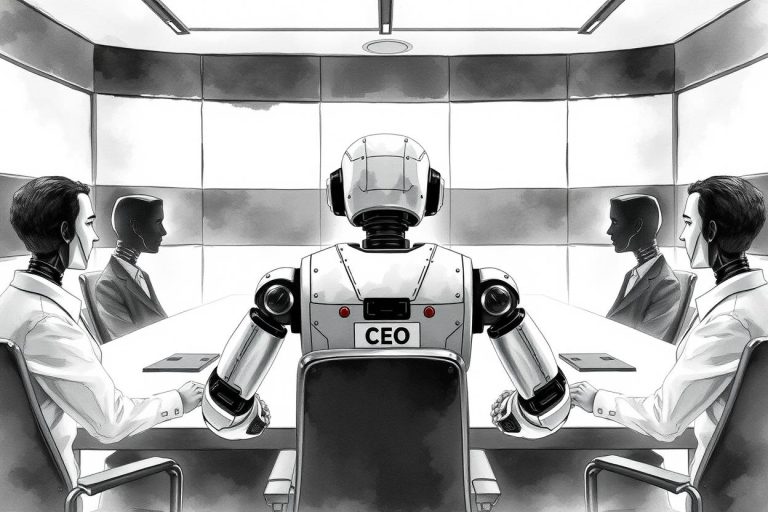Customer Service AI Agents: A Practical Analysis for Businesses

What are Customer Service AI Agents?
Customer Service AI Agents are sophisticated software programs that use artificial intelligence, specifically large language models, to understand, process, and resolve customer inquiries autonomously. These intelligent service agents are designed to go far beyond the capabilities of traditional chatbots by not only conversing with customers but also by executing complex, multi-step tasks across various business systems.
Unlike older, rule-based systems, modern support autonomous AI can interpret a customer’s intent, access data, make decisions, and take direct action to solve a problem from start to finish. This ability to reason and act without constant human intervention allows businesses to automate a significant portion of their support operations, leading to faster resolutions and a more consistent customer experience.
What are the Core Components of a Modern AI Support Agent?
To appreciate how these agents function, it helps to understand their three primary components:
- The Brain: Large Language Models (LLMs): At the core of every intelligent agent is an LLM. This is the “brain” that provides the power to understand the nuances of human language, recognize intent, and generate coherent, context-aware responses.
- The Memory: Knowledge Bases and Vector Databases: An agent’s effectiveness depends on the information it can access. This “memory” is a curated knowledge base containing everything from help articles and past support tickets to product specifications. Vector databases allow the AI to find the most relevant information with incredible speed and accuracy.
- The Hands: APIs and Integrations: This is what truly separates an AI agent from a chatbot. APIs are the “hands” that allow the agent to connect to and take action within other software systems. This enables the agent to check an order status in your Shopify store, process a refund through Stripe, or update a customer record in Salesforce.
This technology is gaining momentum now due to a convergence of factors. The widespread availability of powerful LLMs, advancements in API and automation platforms that simplify integration, and rising customer expectations for instant, 24/7 support have created the perfect environment for the ascent of customer interaction agents.
What Are the Key Business Benefits of Using AI Support Agents?
Integrating Customer Service AI Agents into a support strategy delivers substantial business advantages by improving efficiency, elevating the customer experience, and empowering human support teams.
How do customer service AI Agents impact operational efficiency and cost?
AI agents directly address operational costs by automating a large volume of interactions. They drastically reduce resolution times by providing immediate answers, eliminating the queue. This 24/7 availability allows for massive scale without a linear increase in headcount. Furthermore, these intelligent service agents automate repetitive administrative duties like ticket classification and data entry, which reduces the manual workload on human teams.
According to a 2024 report from Fortune Business Insights, the global AI for customer service market is projected to grow from $12.06 billion in 2024 to $47.82 billion by 2030, a clear indicator of its perceived value.
How Do They Enhance the Overall Customer Experience (CX)?
The primary benefit for the end-user lies in speed and convenience. AI agents provide instant, personalized resolutions without frustrating wait times. By drawing from a central knowledge base, they also supply a highly consistent service quality that aligns with the company’s brand voice. For global businesses, they offer a straightforward way to provide multi-lingual support effortlessly. The Zendesk CX Trends Report 2025 found that 59% of consumers believe generative AI will fundamentally alter their interactions with companies, highlighting a public readiness for this technological shift.
What is the Strategic Advantage for Human Support Teams?
AI agent assistance is not about replacing human agents but augmenting them. By handling the high-volume, repetitive queries, AI agents free human professionals to focus on complex, high-value, and empathetic interactions that build lasting customer relationships. The agent can also serve as a powerful co-pilot, feeding real-time information and suggestions to a human agent during a call or chat, making them more effective and confident in their roles.
How do AI Customer Service Agents actually work?
AI agents operate autonomously. They analyze data, make decisions, and execute actions without requiring constant human oversight, enabling businesses to automate complex workflows efficiently. Here is a step-by-step breakdown of a typical interaction.
A Step-by-Step Breakdown of an AI Agent Interaction
- Step 1: Intent Recognition: The process begins when the agent understands what the customer wants. It deciphers the user’s request, whether it’s “Where is my order?” or “I need to change my subscription.”
- Step 2: Information Gathering: The agent uses its API integrations to access internal systems. It might check an order management system for a tracking number or a CRM for subscription details.
- Step 3: Reasoning and Decision-Making: With the necessary data, the agent formulates a plan. It determines the sequence of actions required to resolve the issue, such as retrieving the tracking link and the estimated delivery date.
- Step 4: Action Execution: The agent performs the planned task. This could involve triggering a status update email, processing a return authorization, or updating an account setting in the database.
- Step 5: Natural Language Response: Finally, the agent communicates the resolution clearly and conversationally to the customer, confirming the action taken and asking if anything else is needed.
How are AI Agents trained and maintained?
These systems are not “set it and forget it.” Their performance relies on the quality of their training data, which typically includes help documents, FAQs, and logs of past support tickets. This information grounds the AI, preventing it from making up information. Many companies also fine-tune the models on their own data to ensure the agent’s responses match their brand voice.
Continuous monitoring of those learning agents, as well as the human-in-the-loop feedback system are critical for identifying areas for improvement and refining the agent’s accuracy over time.
What Specific Tasks Can AI Agents Handle in Customer Support?
The practical applications for Customer Service AI Agents span nearly every industry. Their ability to handle both simple and complex tasks makes them a versatile tool for any support team.
Common Use Cases in E-commerce and Retail
In e-commerce, customer interaction agents excel at managing the most common inquiries.
- Handling “Where Is My Order?” (WISMO) inquiries: They can instantly look up order statuses and provide tracking information.
- Processing returns and exchanges autonomously: Agents can guide customers through the return process, generate shipping labels, and initiate refunds without human intervention.
- Providing personalized product recommendations: By accessing a customer’s purchase history, an agent can suggest relevant products.
A prominent real-world example comes from Yum! Brands (Taco Bell, Pizza Hut, KFC). Early pilots of AI-driven voice-ordering technology resulted in 10–15% faster order processing and up to a 20% reduction in mistakes.
Key Applications for SaaS and Technology Companies
For SaaS businesses, intelligent service agents can manage a wide range of technical and account-related queries.
- Tier-1 technical support and troubleshooting: They can guide users through common technical issues and resolve them instantly.
- User onboarding and feature guidance: Agents can help new users get started and understand how to use key features.
- Account management tasks: They can handle password resets, subscription changes, and billing questions.
Bank of America’s virtual assistant, Erica, has handled over 2 billion interactions and successfully resolved 98% of customer queries within 44 seconds, dramatically reducing the load on its call centers.
How Do AI Agents Handle Complex Escalations?
A well-designed AI agent understands its own limitations. It can identify conversations that require human empathy, nuanced judgment, or complex problem-solving outside of its programmed abilities. In these cases, it orchestrates a smooth handoff to a human agent, providing the full transcript and context of the interaction so the customer doesn’t have to repeat themselves.
How Do You Implement an AI Agent in Your Customer Service Strategy?
Deploying a support autonomous AI requires a structured approach. A strategic roadmap ensures a successful launch that delivers measurable value without disrupting operations.
What is the Strategic Roadmap for a Successful Launch?
When evaluating platforms, consider this phased approach:
- Phase 1: Identify: Start with a narrow scope. Identify high-volume, low-complexity use cases where automation can have the biggest and fastest impact.
- Phase 2: Prepare: Build and structure your knowledge base. A clean, comprehensive, and up-to-date knowledge base is the foundation of an effective AI agent.
- Phase 3: Select: Choose the right AI agent platform. Decide whether to build a custom solution or buy an off-the-shelf platform that integrates with your existing tools.
- Phase 4: Pilot: Test the agent with a small, controlled user segment. Gather feedback to identify and correct any issues before a full-scale rollout.
- Phase 5: Scale: Once the agent is performing well, gradually expand its responsibilities to cover more complex use cases and channels.
What Are the Key Metrics (KPIs) to Measure AI Agent Success?
The primary benefit of AI agents lies in their scalability. To measure their impact, track these key performance indicators:
- Containment Rate: The percentage of interactions resolved by the AI without human escalation.
- Customer Satisfaction (CSAT) and Net Promoter Score (NPS): Direct feedback on how customers feel about their interaction with the agent.
- First Contact Resolution (FCR): The percentage of issues resolved in a single interaction.
- Cost Per Resolution: The total cost of the AI platform divided by the number of resolutions it handles.
What Are the Common Misconceptions About Customer Service AI Agents?
As with any emerging technology, several myths surround AI agents. Addressing them directly is key to understanding their true potential.
- Misconception 1: “AI Agents Will Completely Replace Human Jobs.”
The reality is augmentation, not replacement. AI agent assistance handles repetitive work, allowing humans to shift their focus to more strategic, creative, and empathetic roles that machines cannot fill. - Misconception 2: “They Are Just Glorified, Frustrating Chatbots.”
This misunderstands the core difference. A chatbot provides answers; an AI agent takes action. Its ability to integrate with business systems to solve problems autonomously puts it in a different category of technology. - Misconception 3: “AI is a ‘Set It and Forget It’ Solution.”
Effective AI requires human oversight. The systems must be continuously monitored, maintained, and trained with new data to keep them accurate and aligned with business goals.
What Are the Challenges and Ethical Considerations of AI in Customer Support?
AI agent security requires multi-layered protection. Companies must implement robust protocols to manage the technical and ethical risks associated with this technology.
How Do You Mitigate Technical and Security Risks?
- Preventing “Hallucinations”: Grounding the AI with a firm, up-to-date knowledge base is the best way to prevent it from making up information.
- Ensuring Data Privacy: All data handling must comply with regulations like GDPR and CCPA.
- Securing API Connections: API access must be carefully managed to prevent unauthorized actions from being taken within your business systems.
What Are the Ethical Guardrails for AI Customer Interactions?
- Transparency: It is crucial to disclose to users that they are interacting with an AI.
- Easy Escalation: Customers should always have a clear and simple path to reach a human agent if they choose.
- Avoiding Bias: Models should be trained and tested to prevent biases in responses and decision-making that could lead to unfair outcomes for certain customer groups.
What is the Future of AI Agents in Customer Experience?
The development of Customer Service AI Agents is accelerating. The coming years will see them become even more integrated into the fabric of the customer experience.
- The Rise of Proactive and Predictive Support: Future agents will identify potential issues—like a delayed shipment or a likely service outage—and reach out to the customer with a solution before they are even aware of a problem.
- Hyper-Personalization at Scale: As agents gain access to more customer history and data, they will be able to tailor every interaction to that individual’s specific preferences and needs.
- The Emergence of the AI-Powered “Autonomous Organization”: Ultimately, AI agents in customer support will connect to agents in sales, marketing, and operations. This will create a unified network that can manage the entire customer lifecycle autonomously, from initial lead to post-purchase support.
In conclusion, Customer Service AI Agents represent a fundamental step forward in how businesses interact with their customers. By automating tasks, providing instant support, and freeing human teams for higher-value work, they offer a powerful path toward greater efficiency and a superior customer experience.




